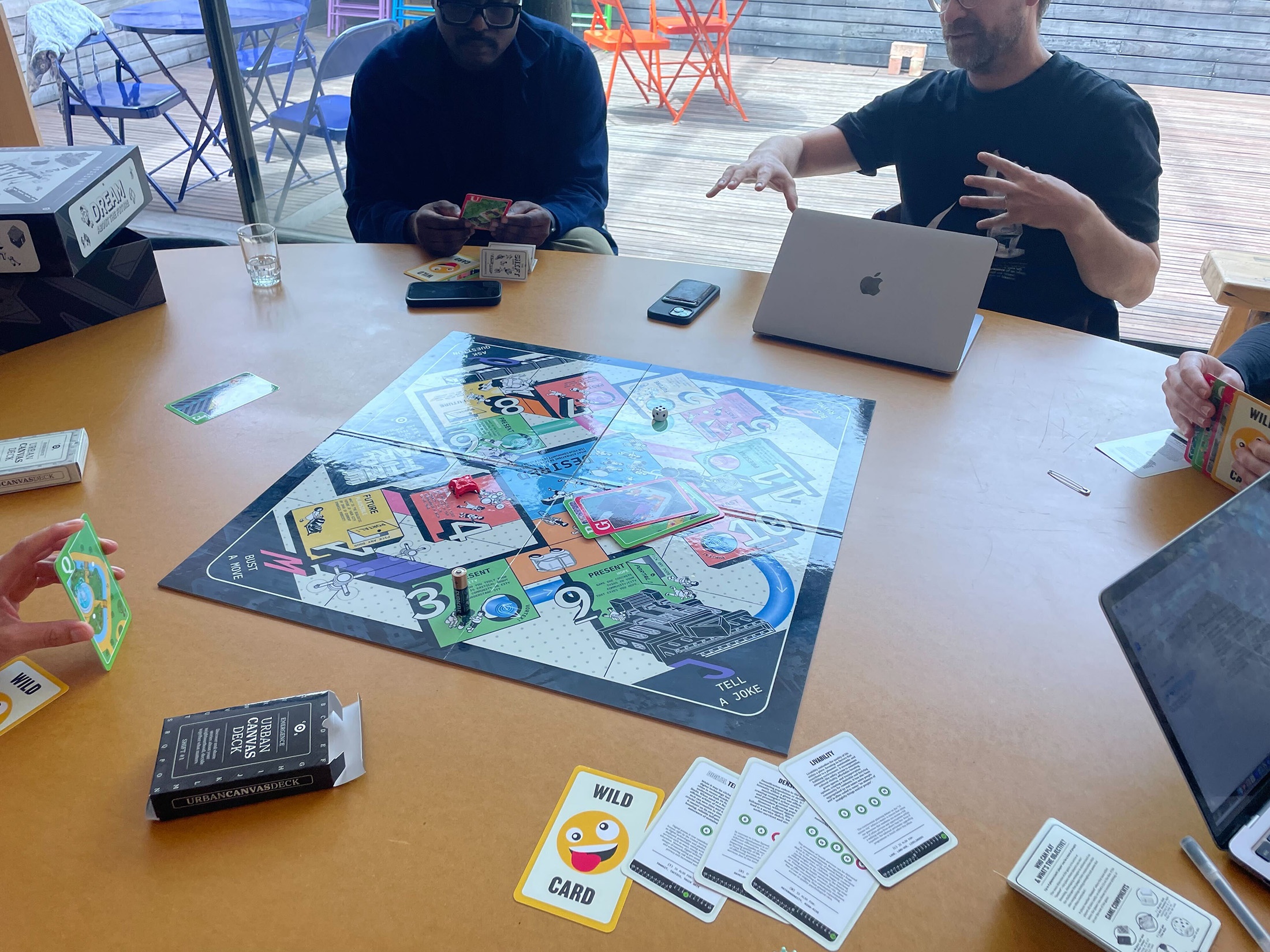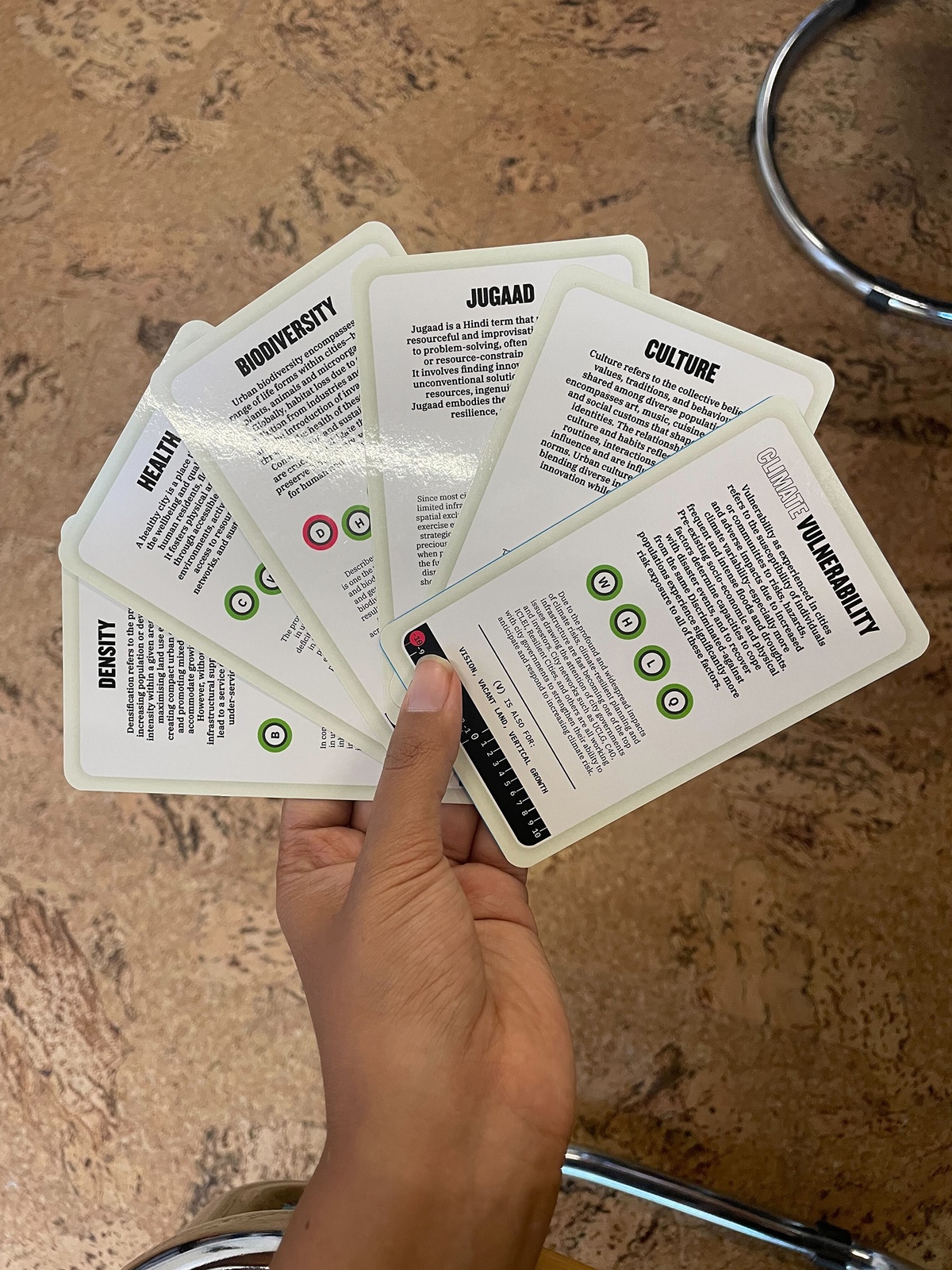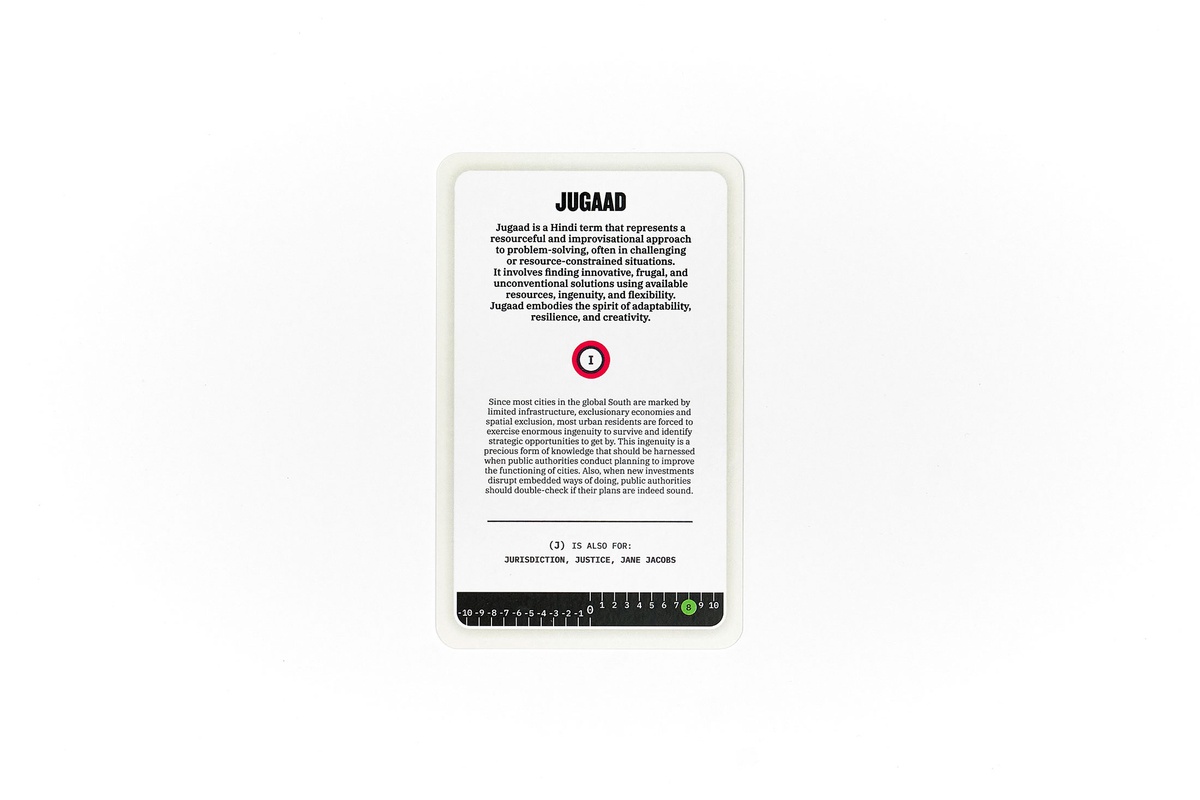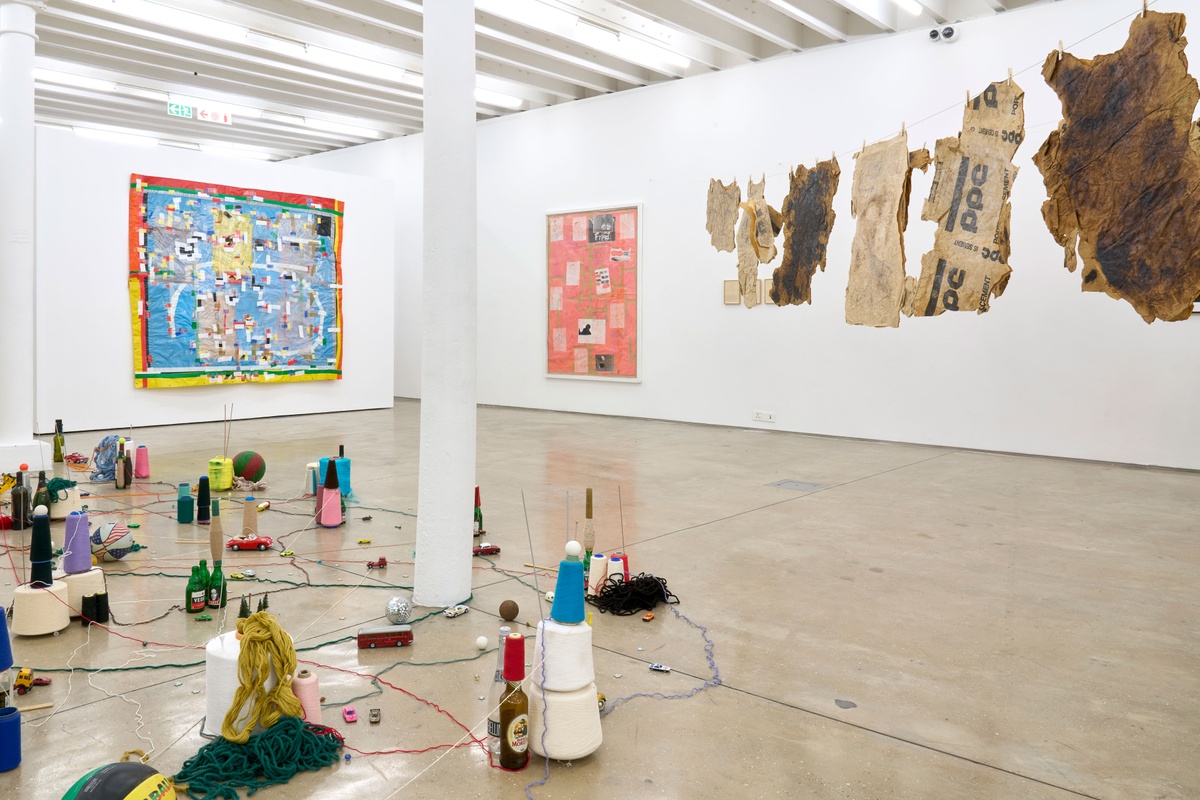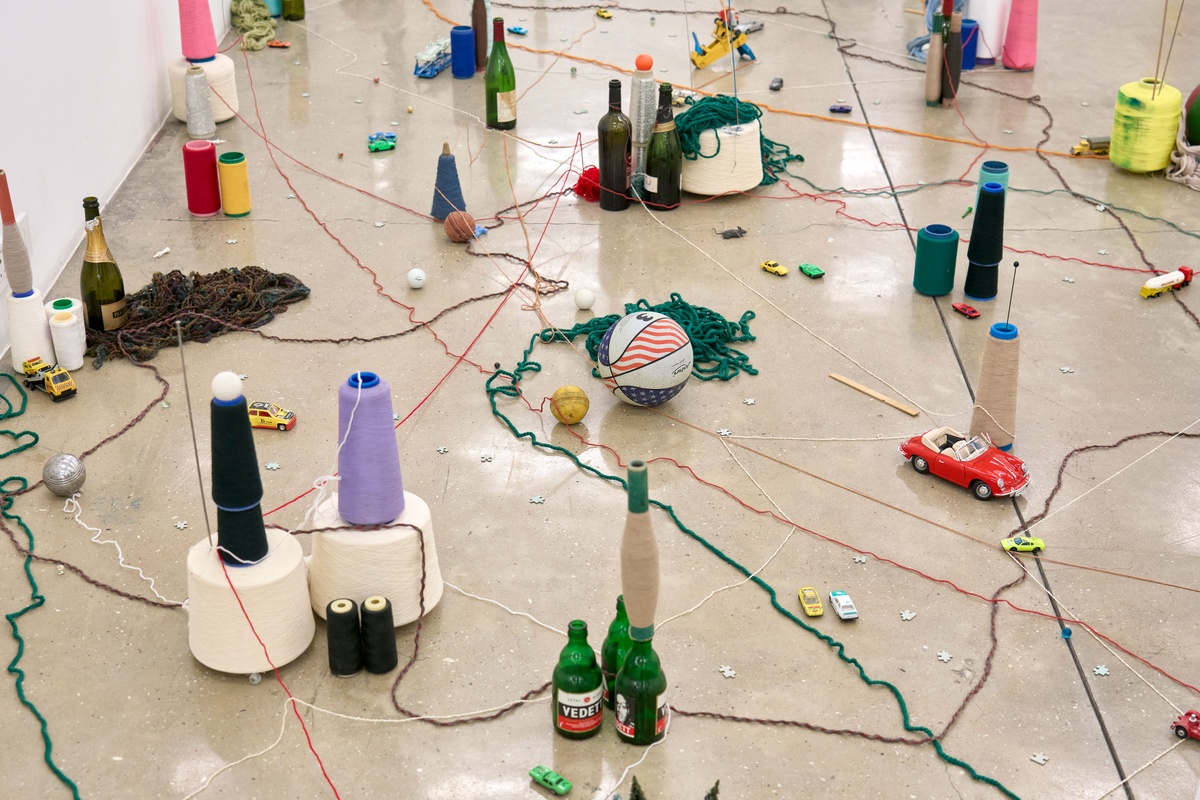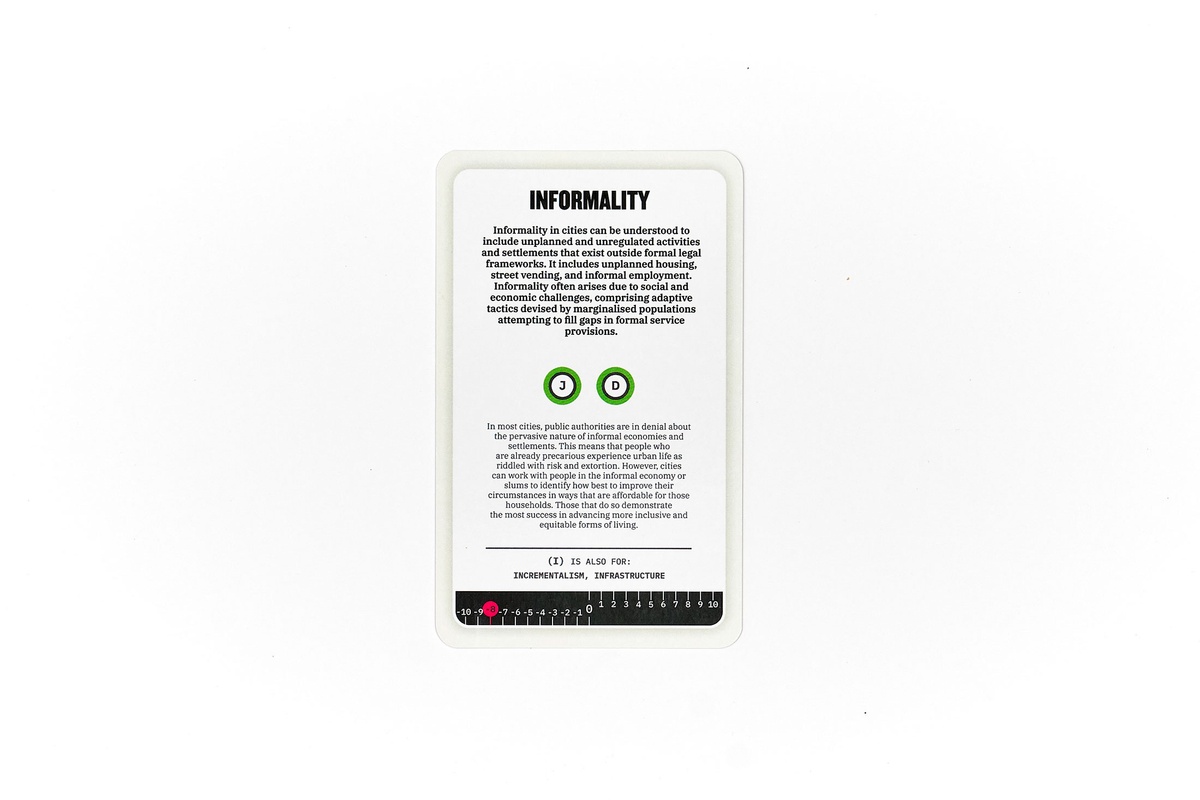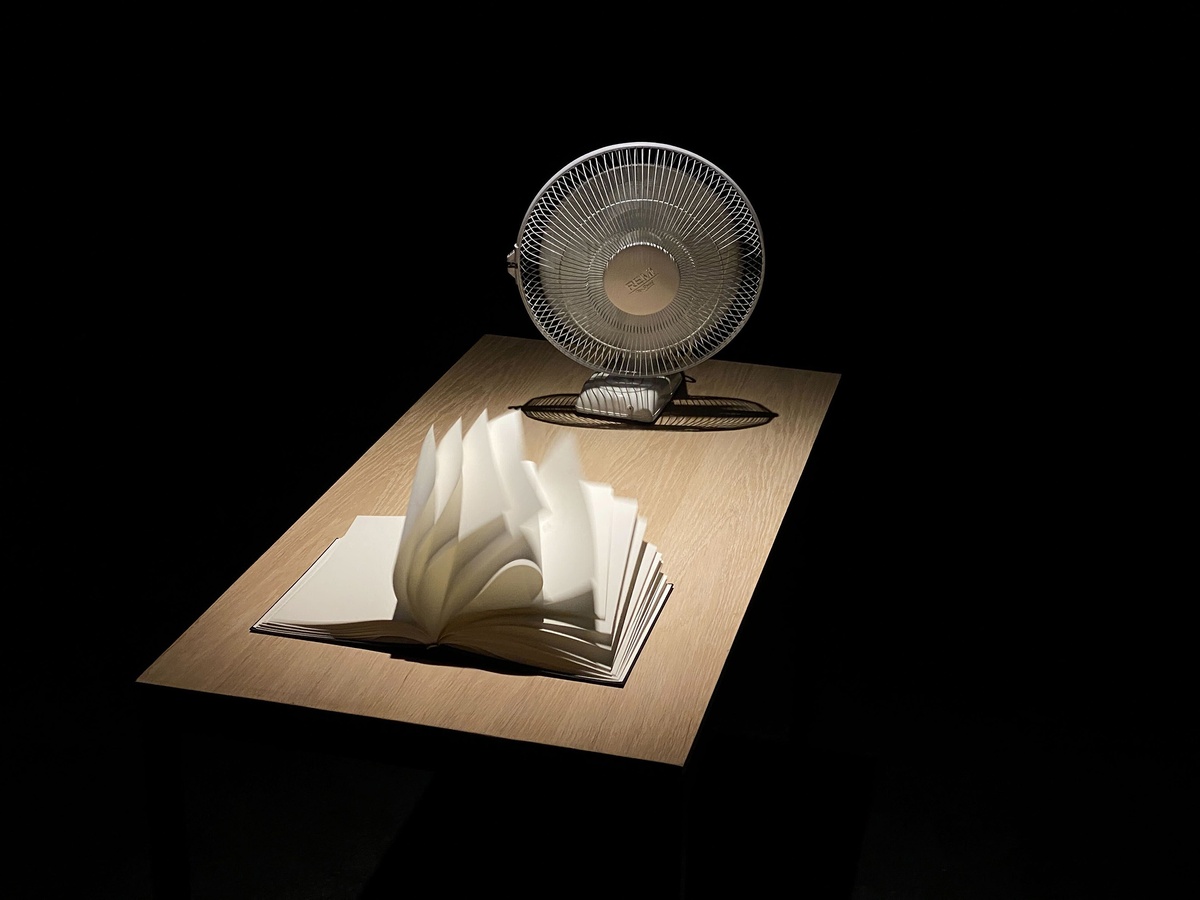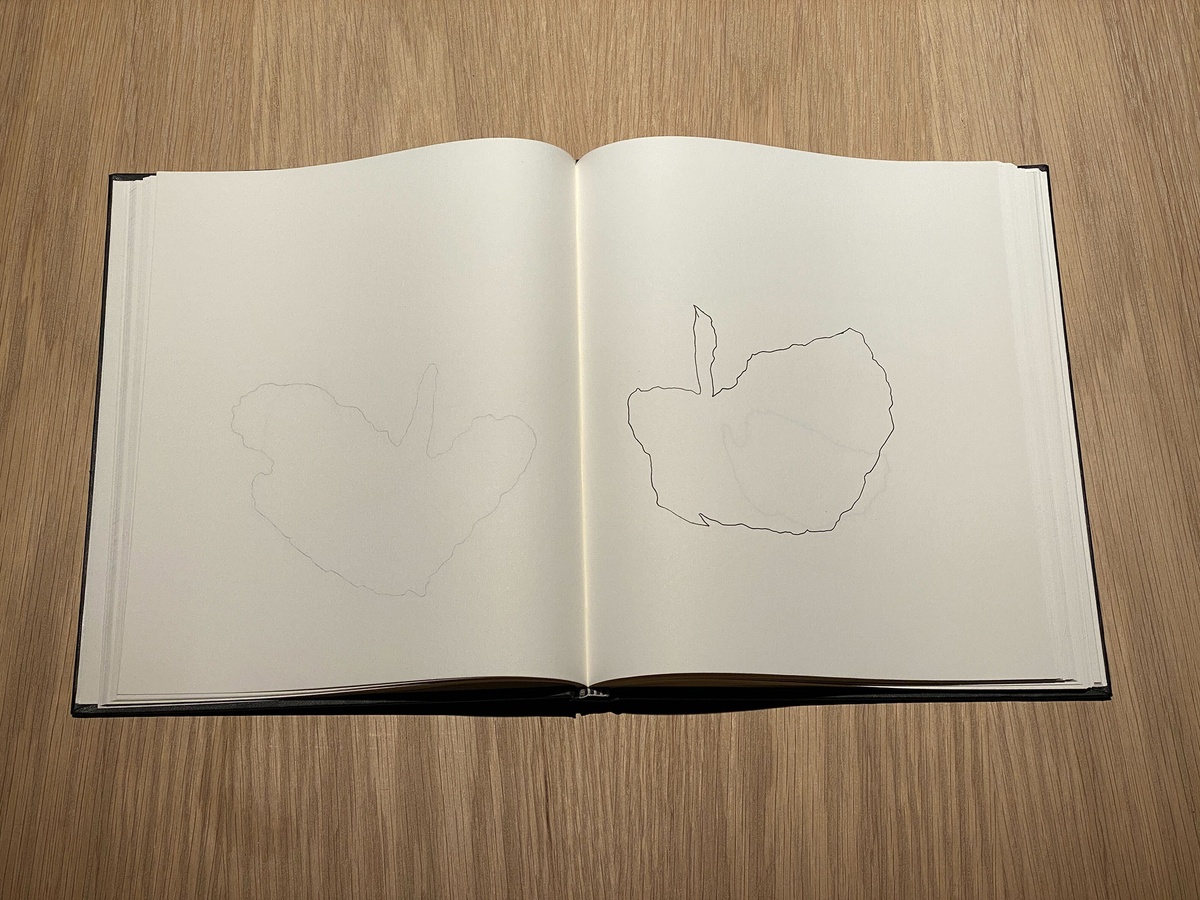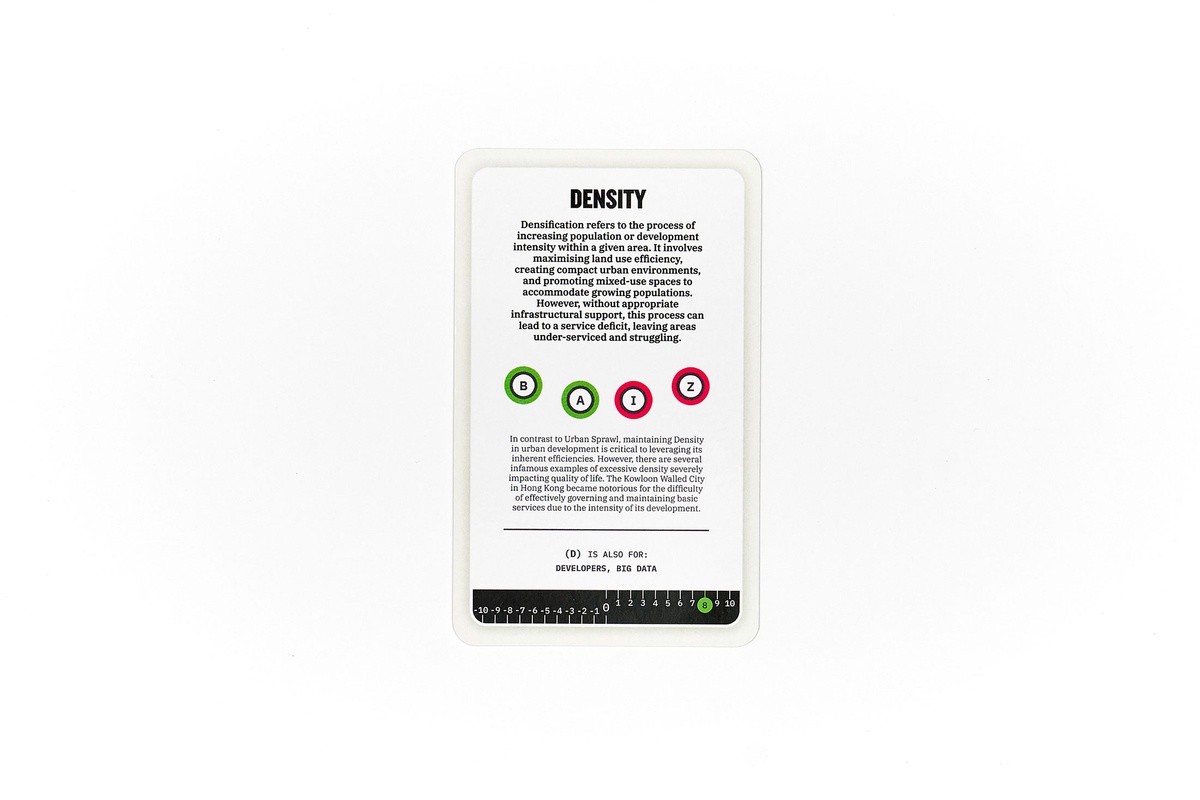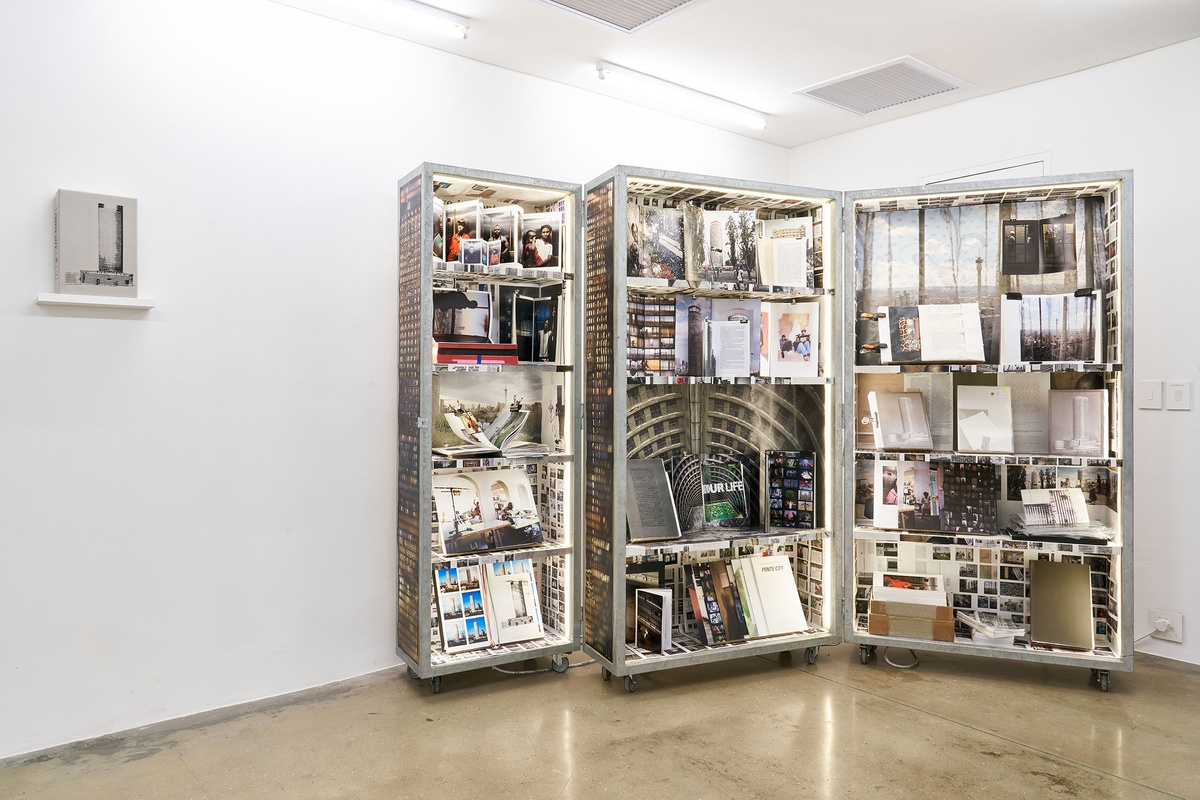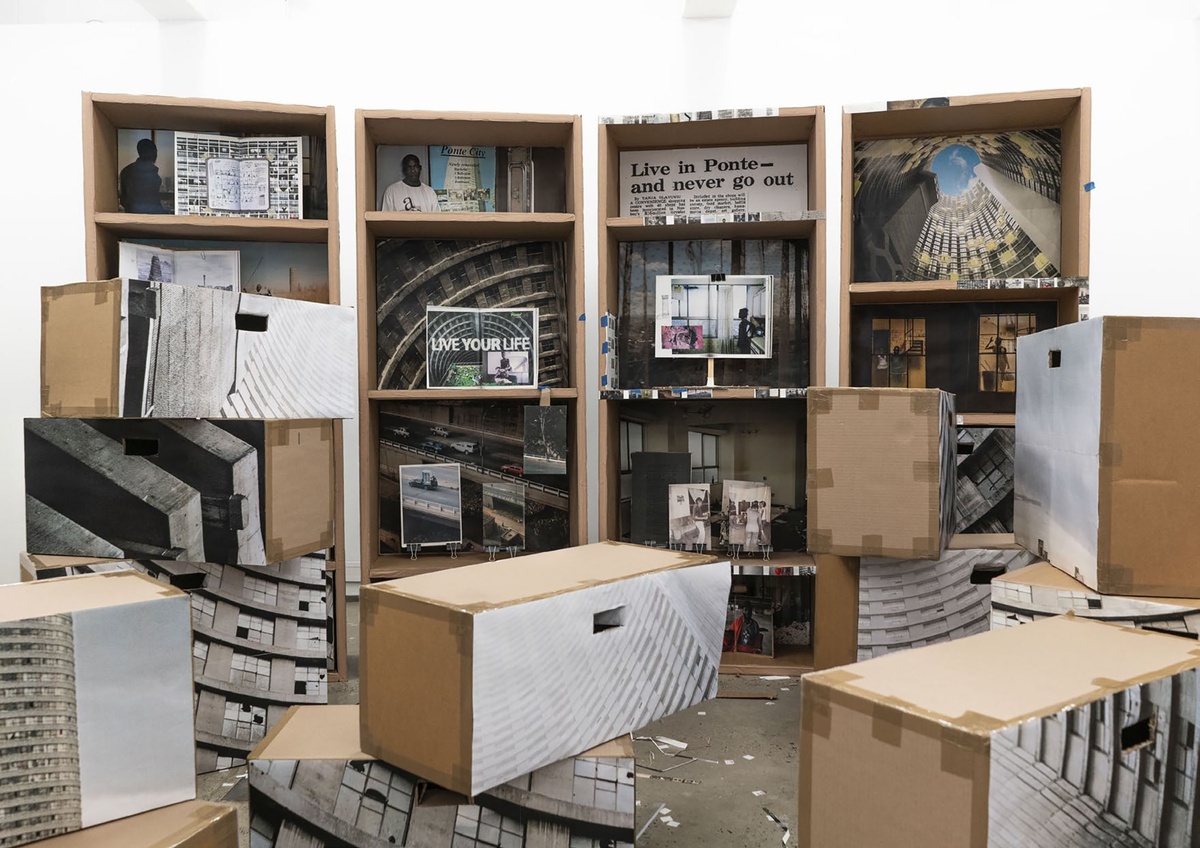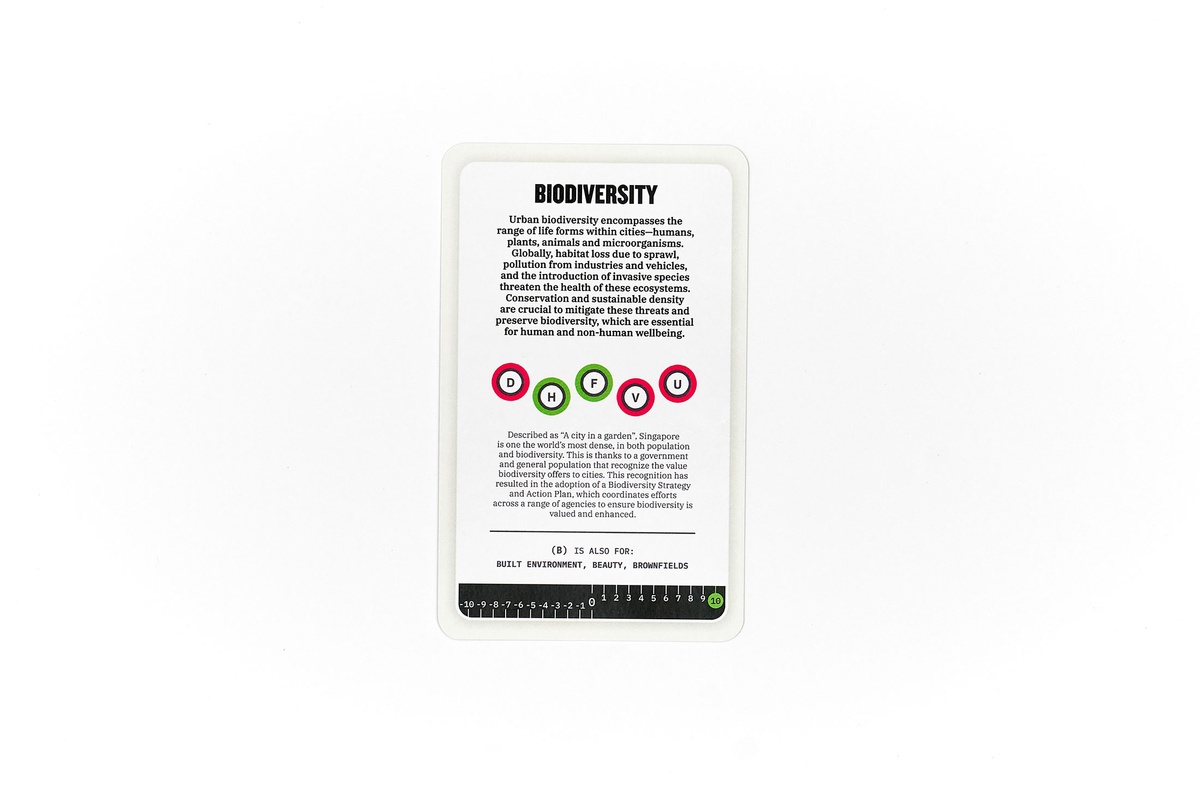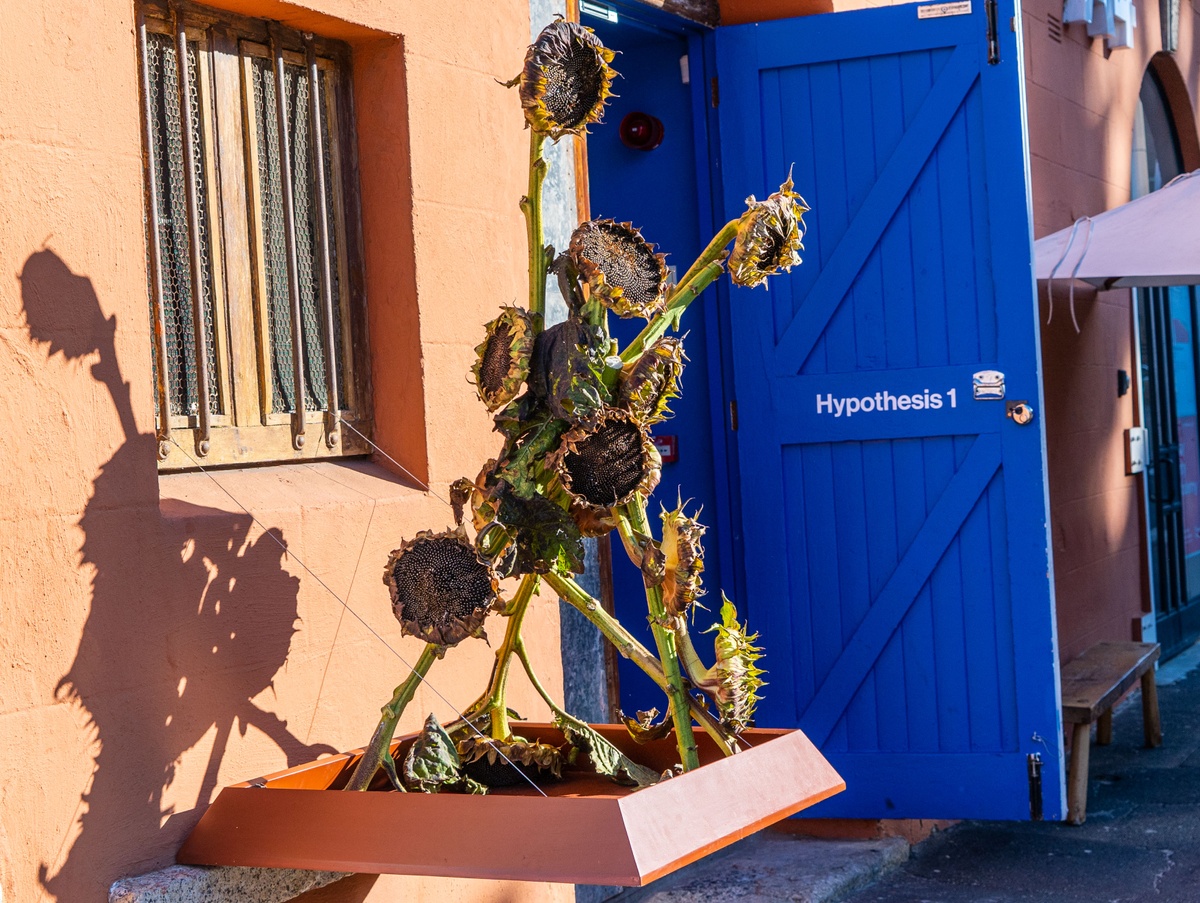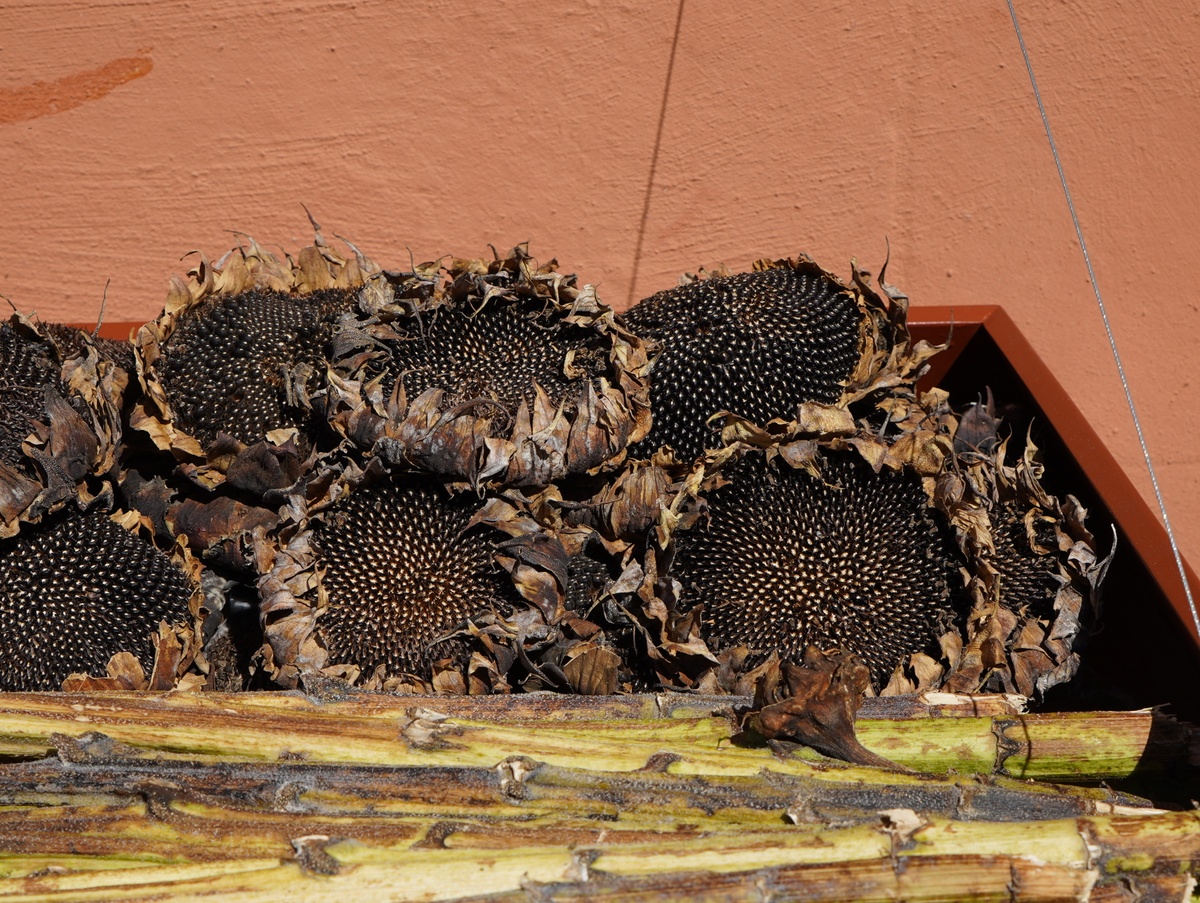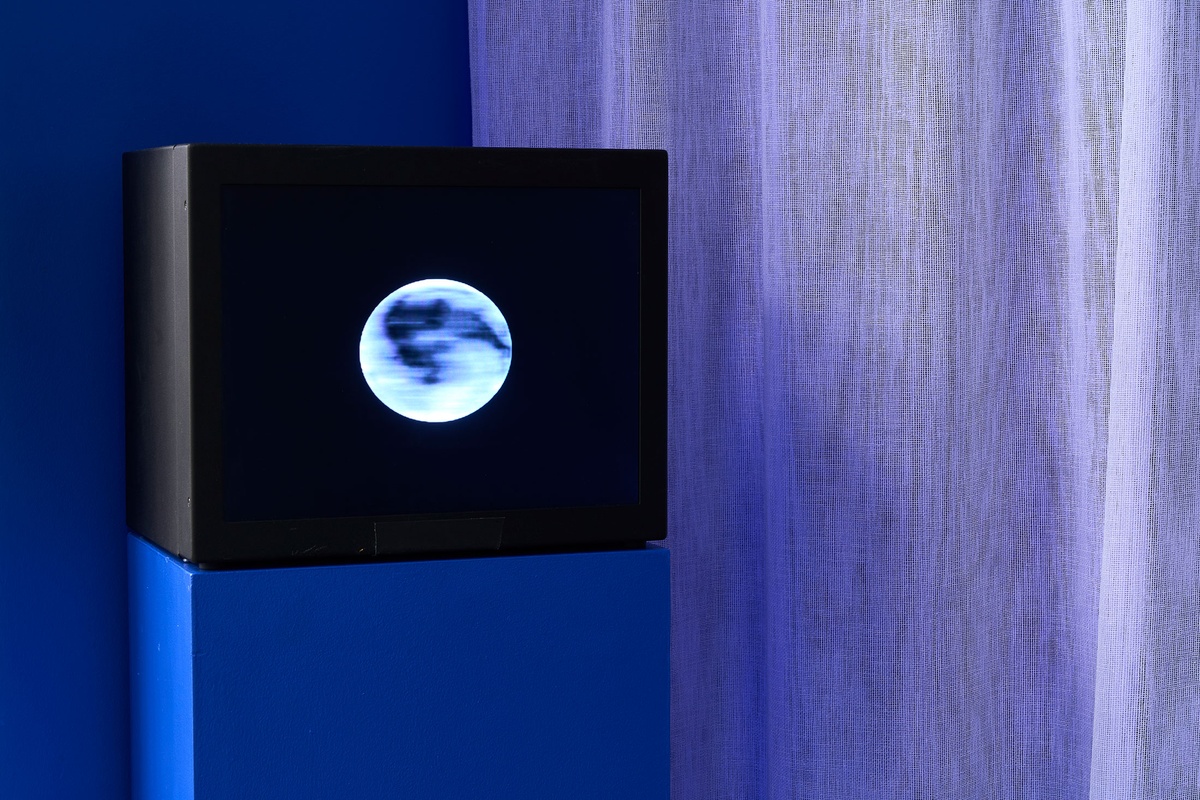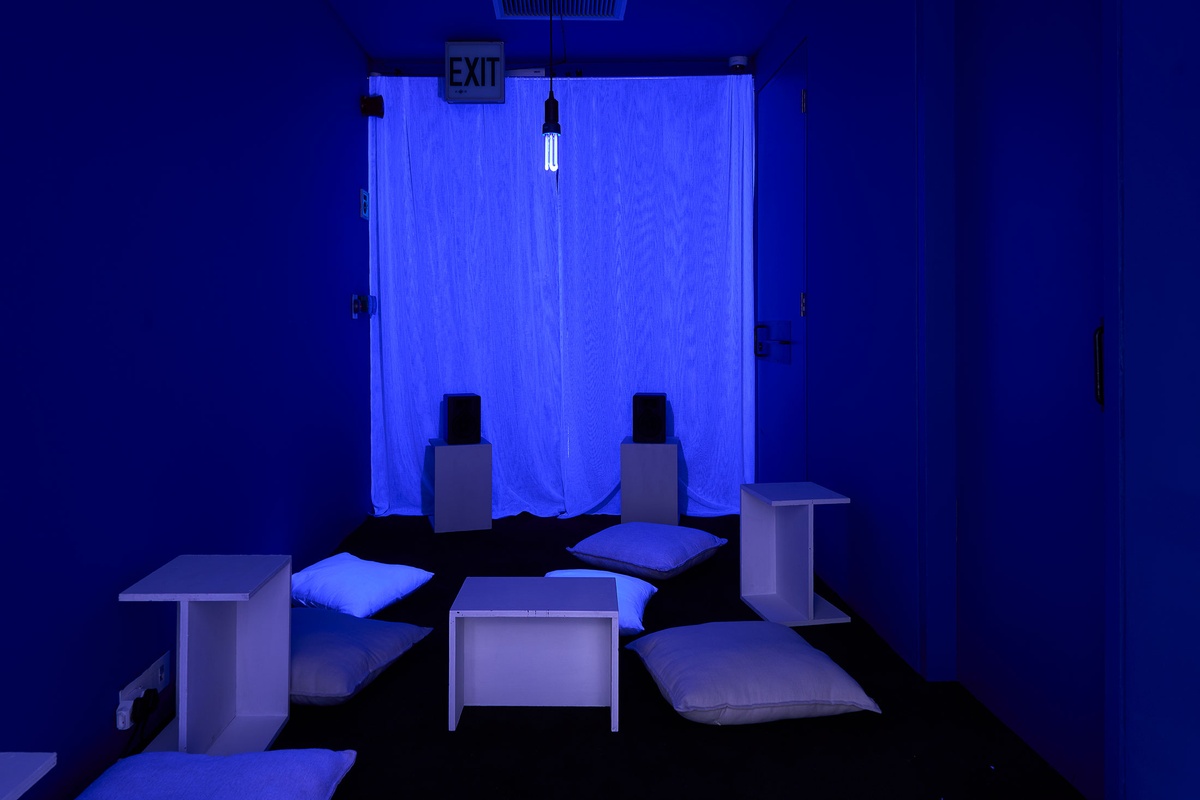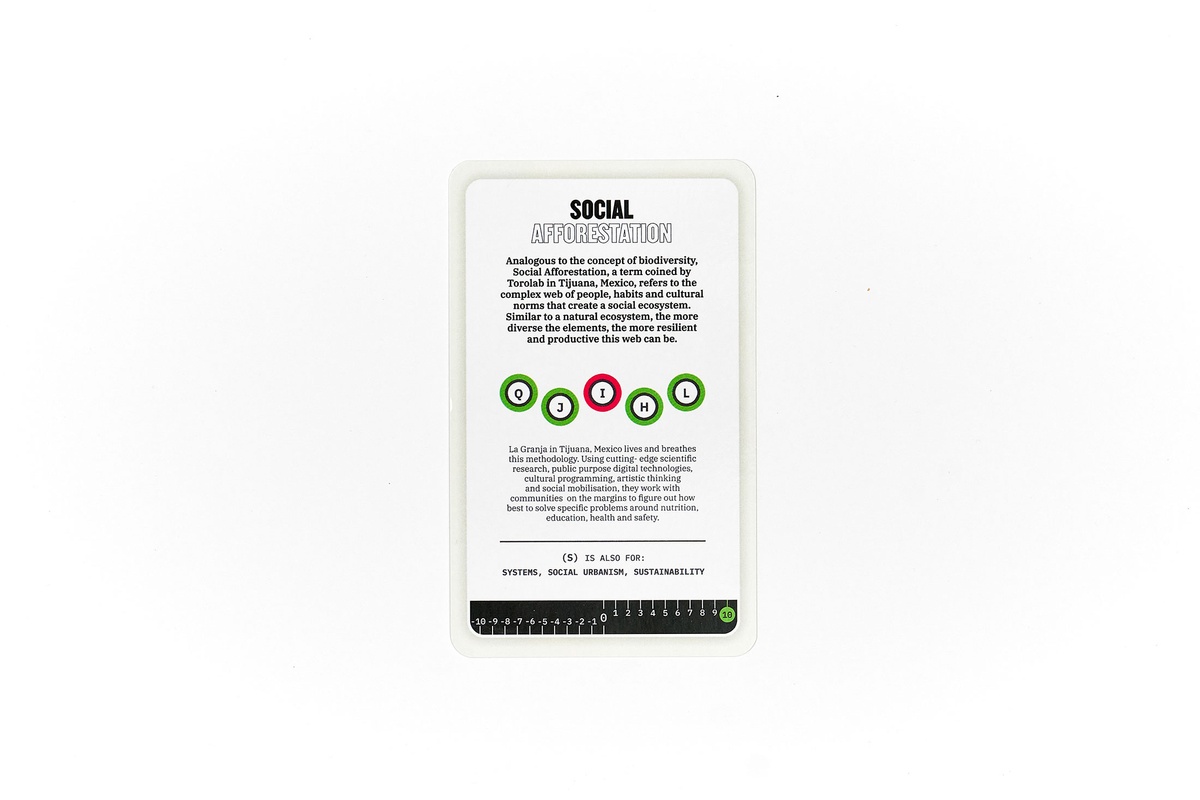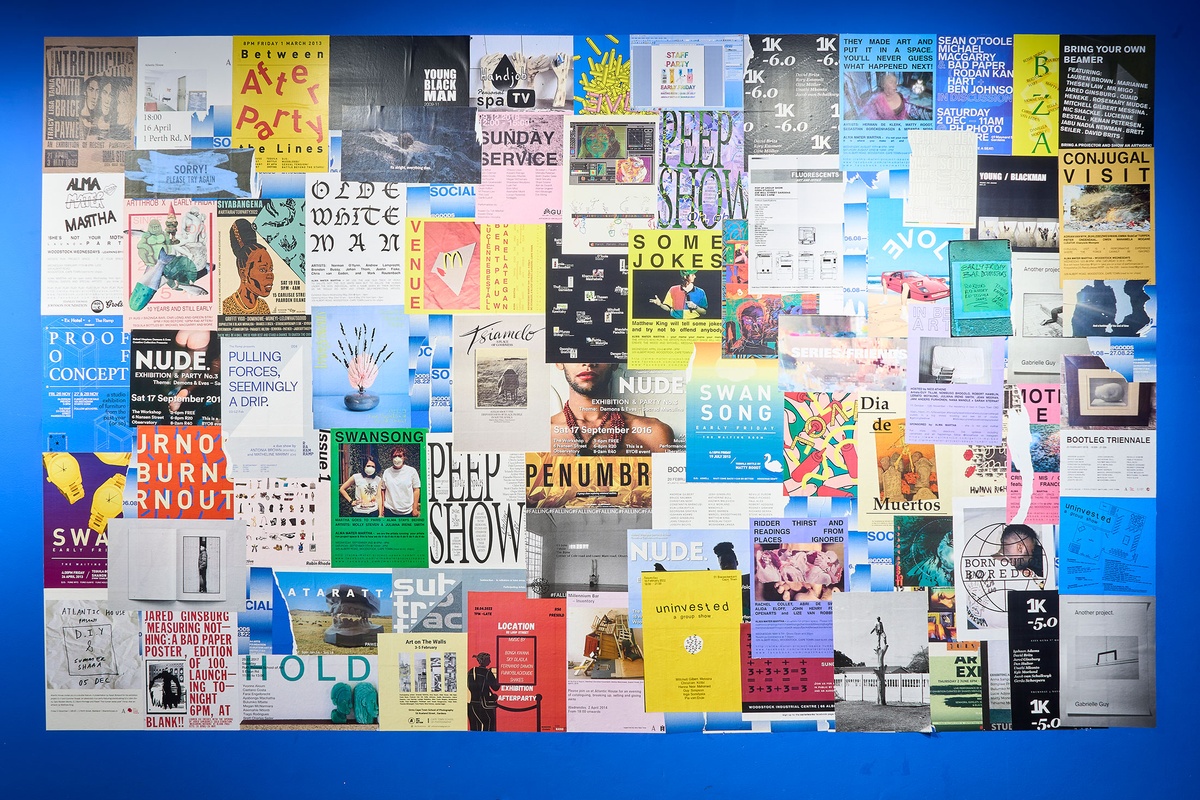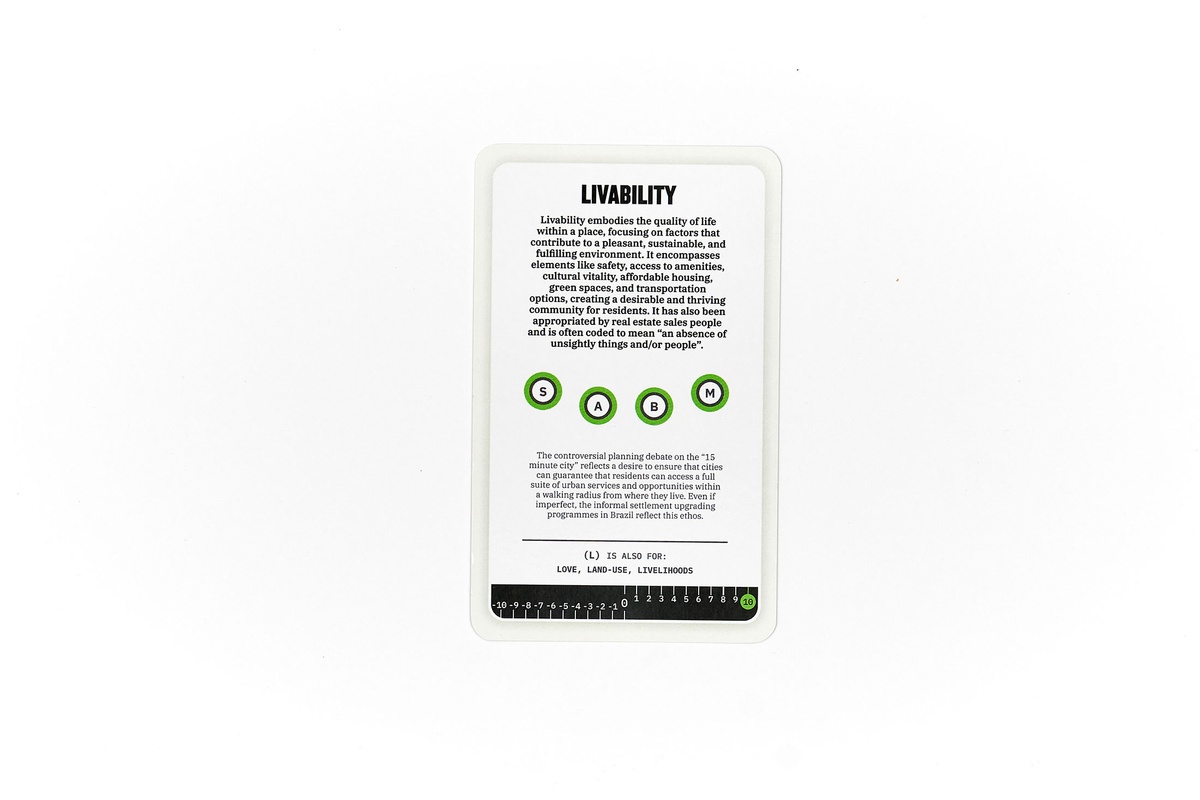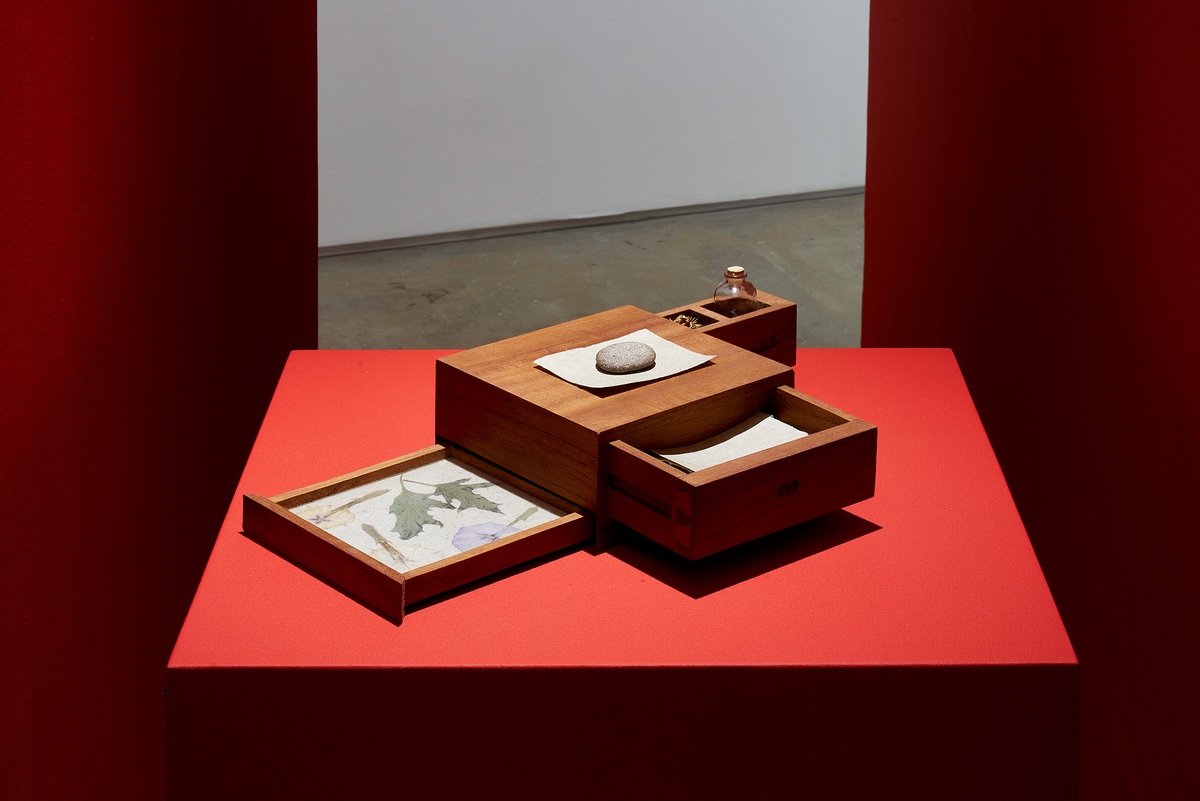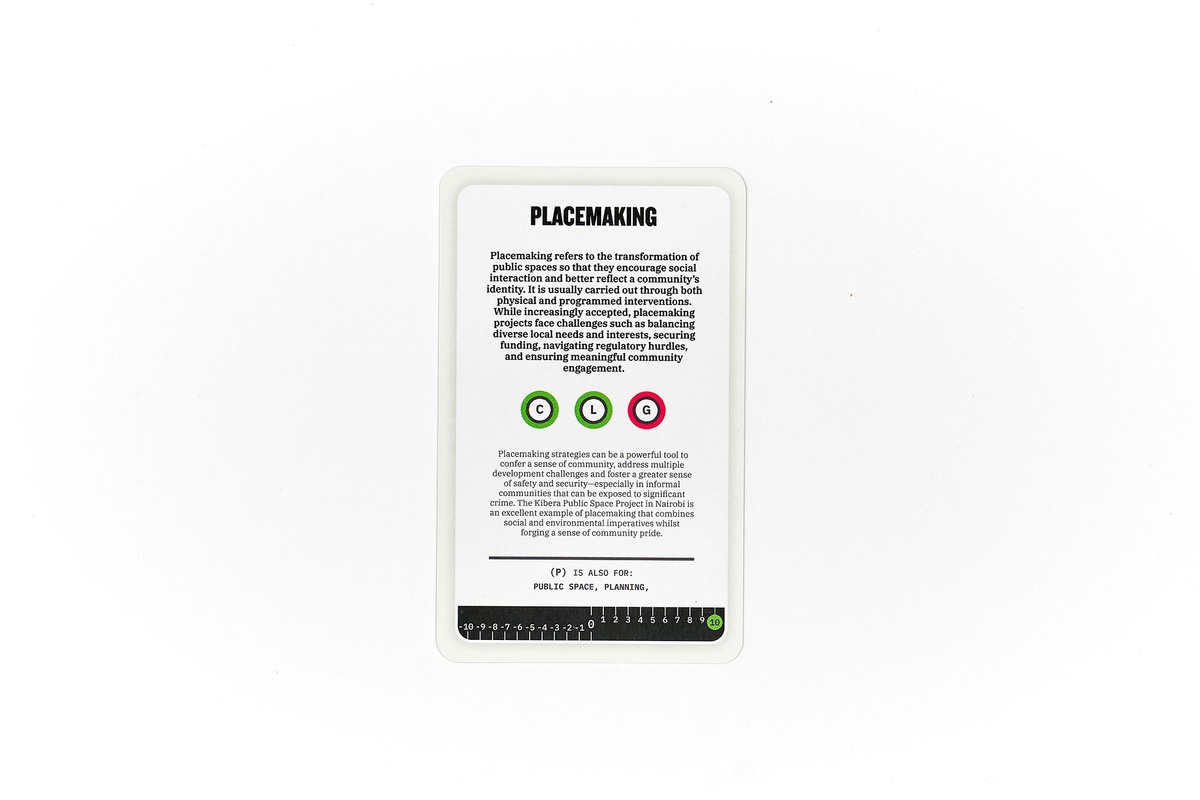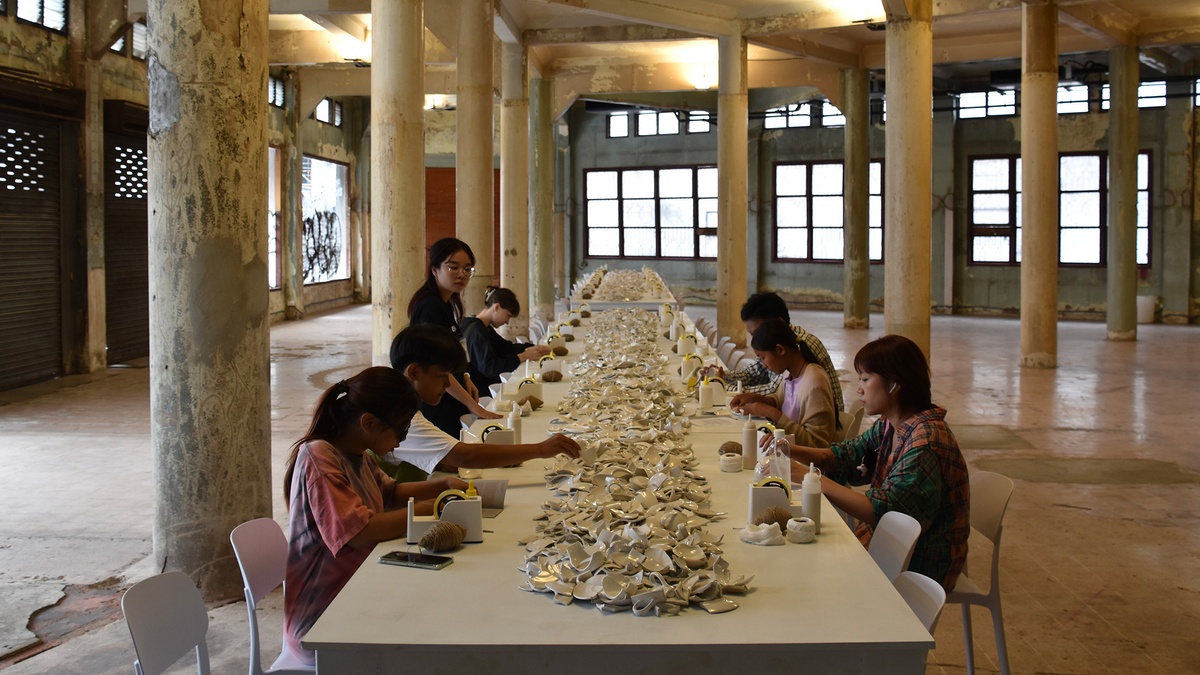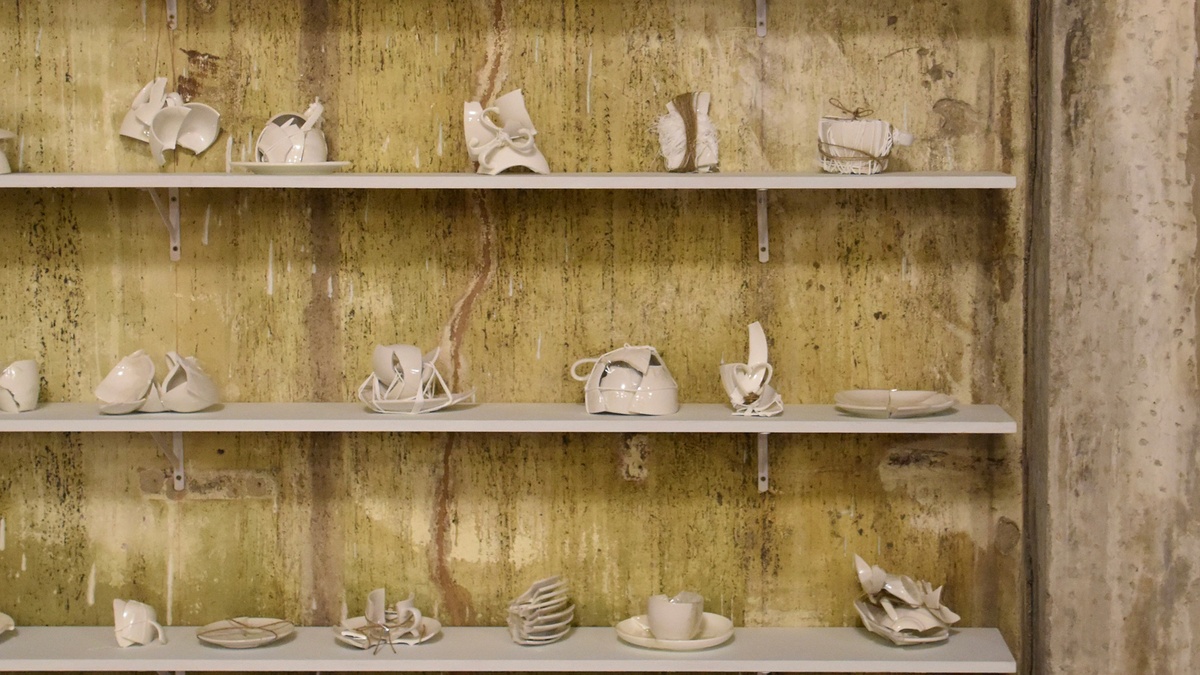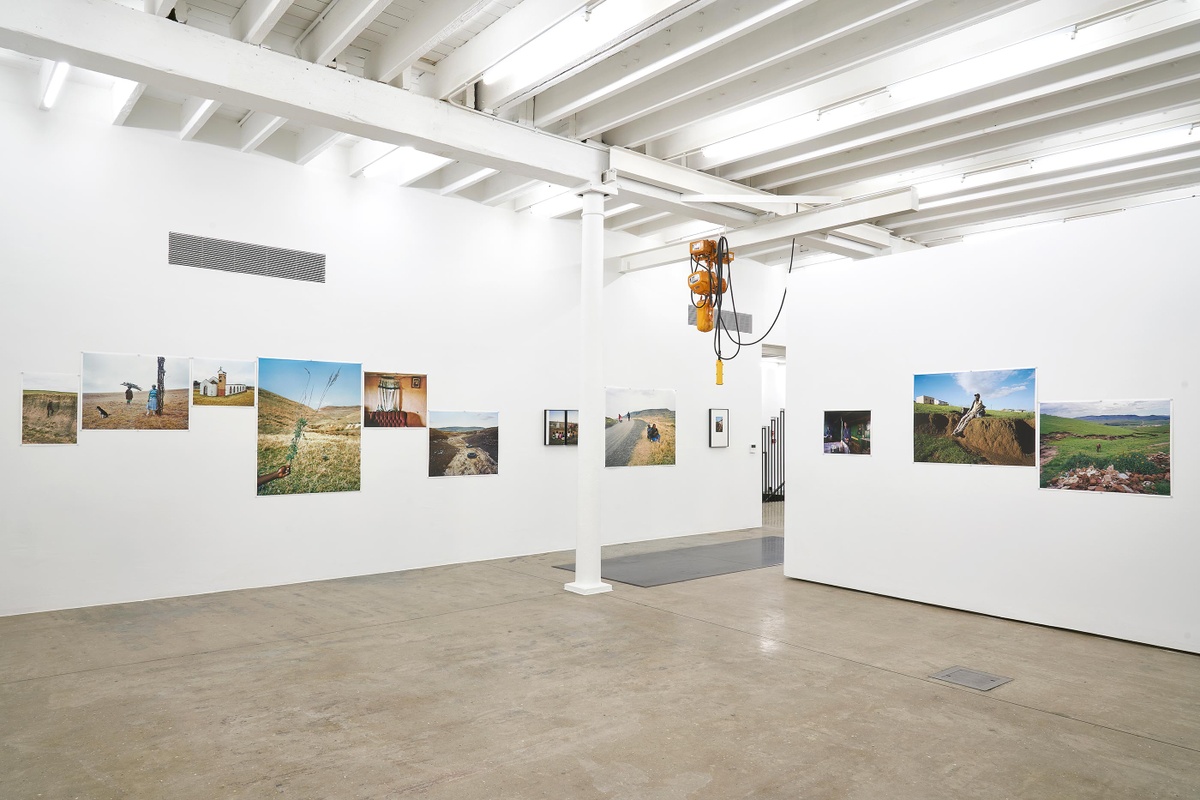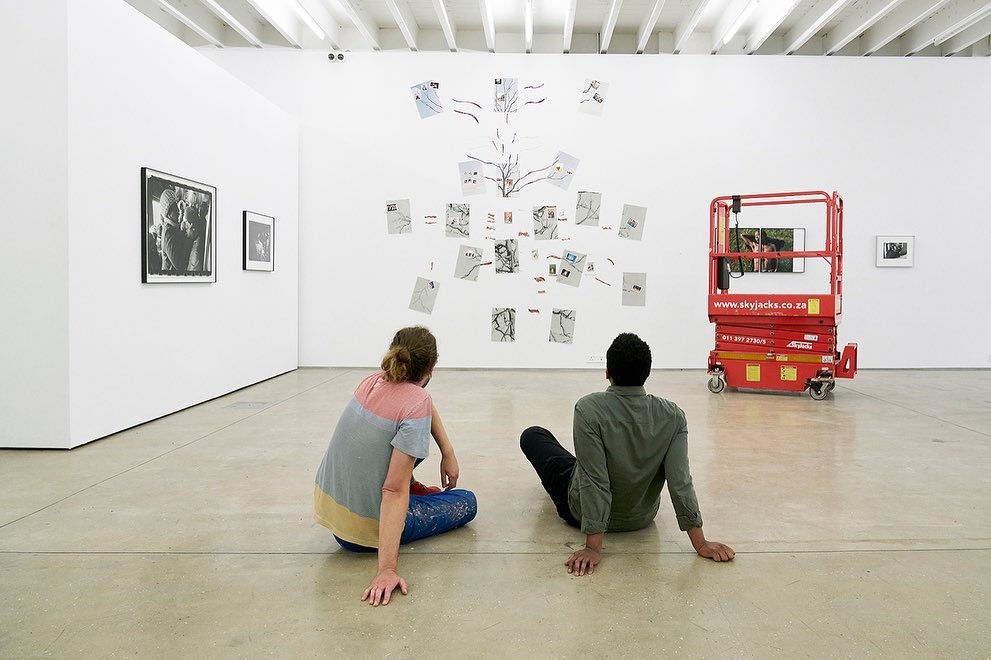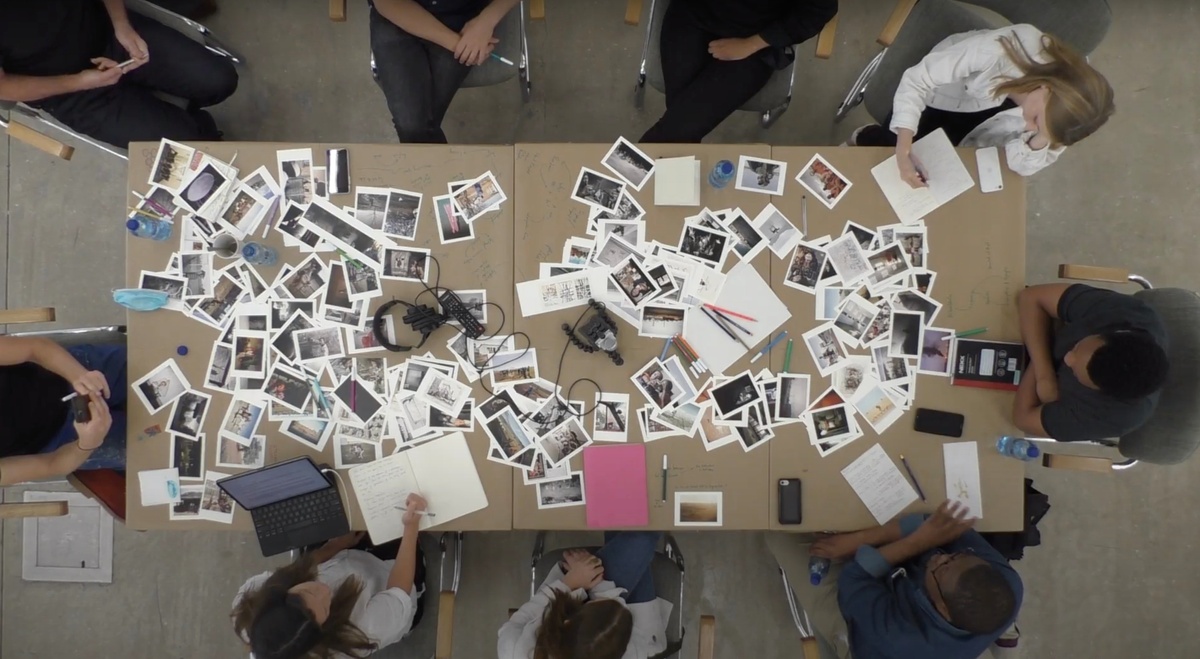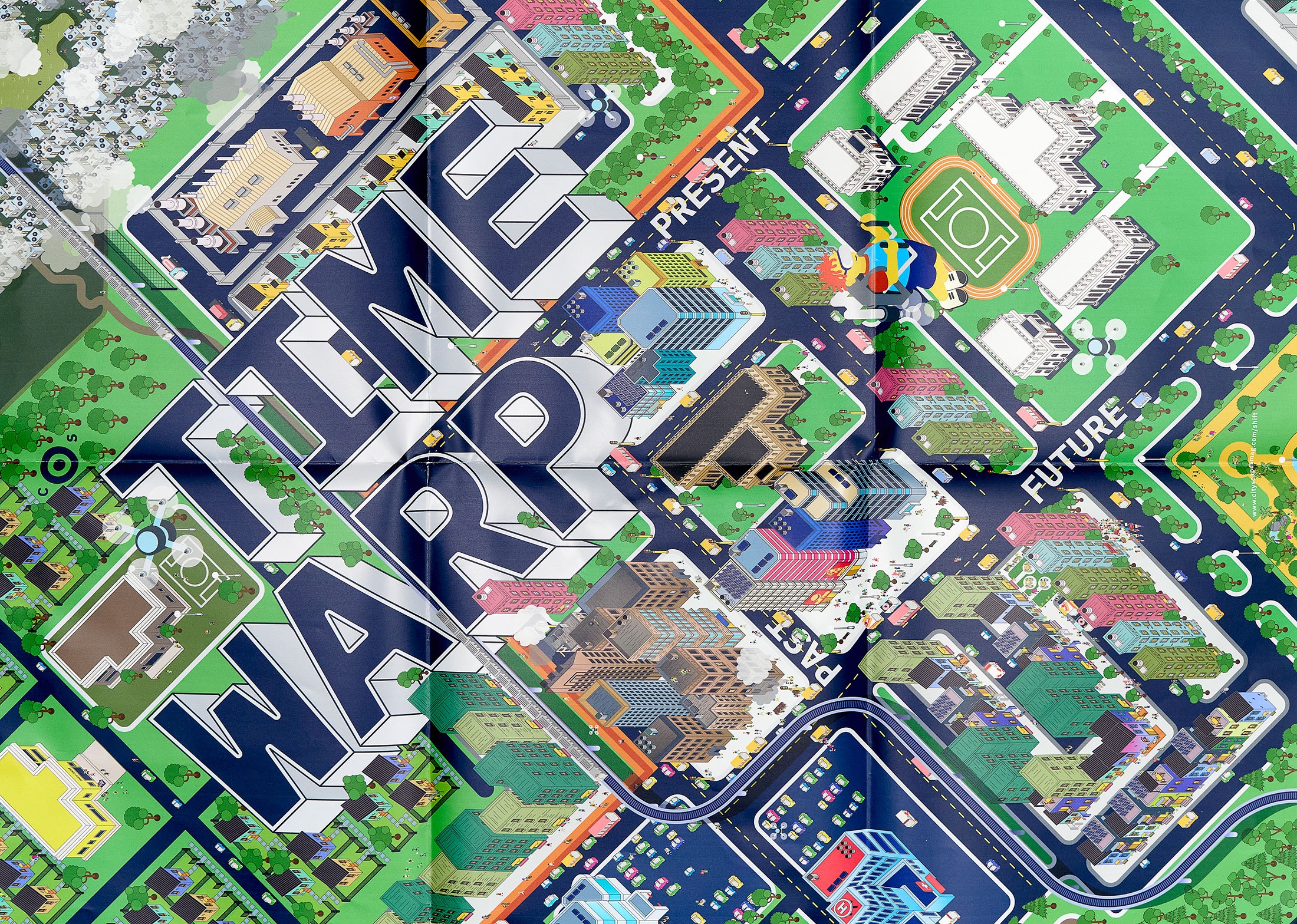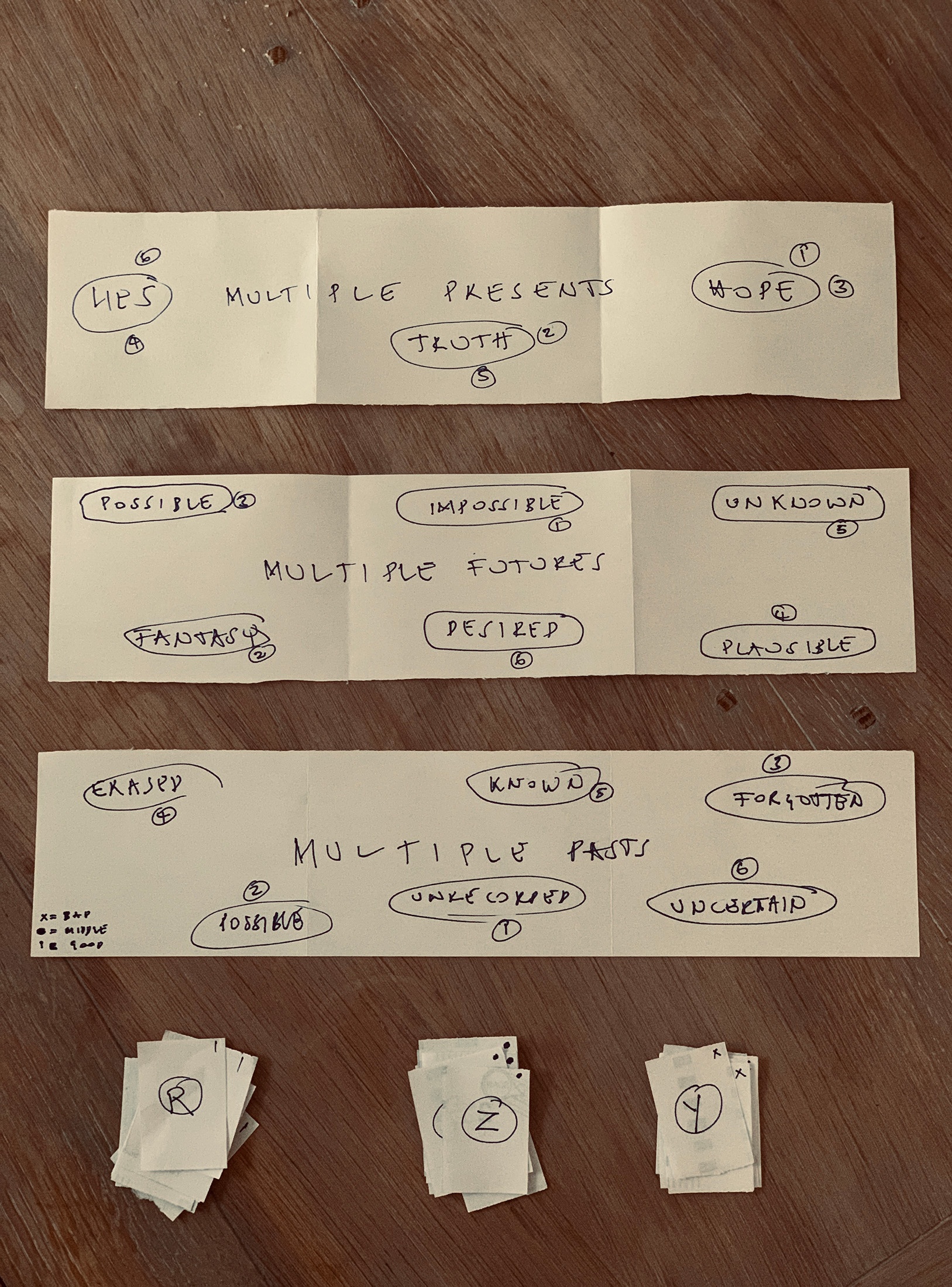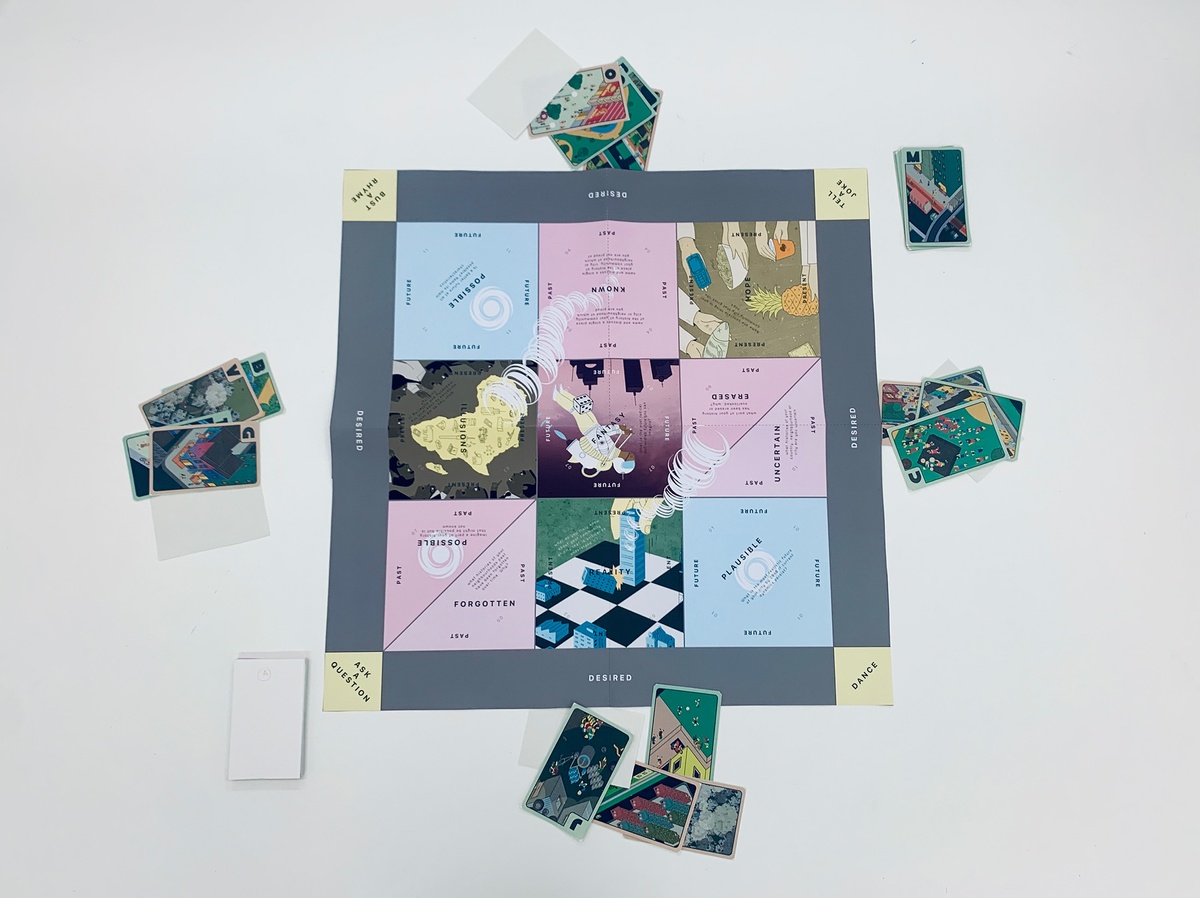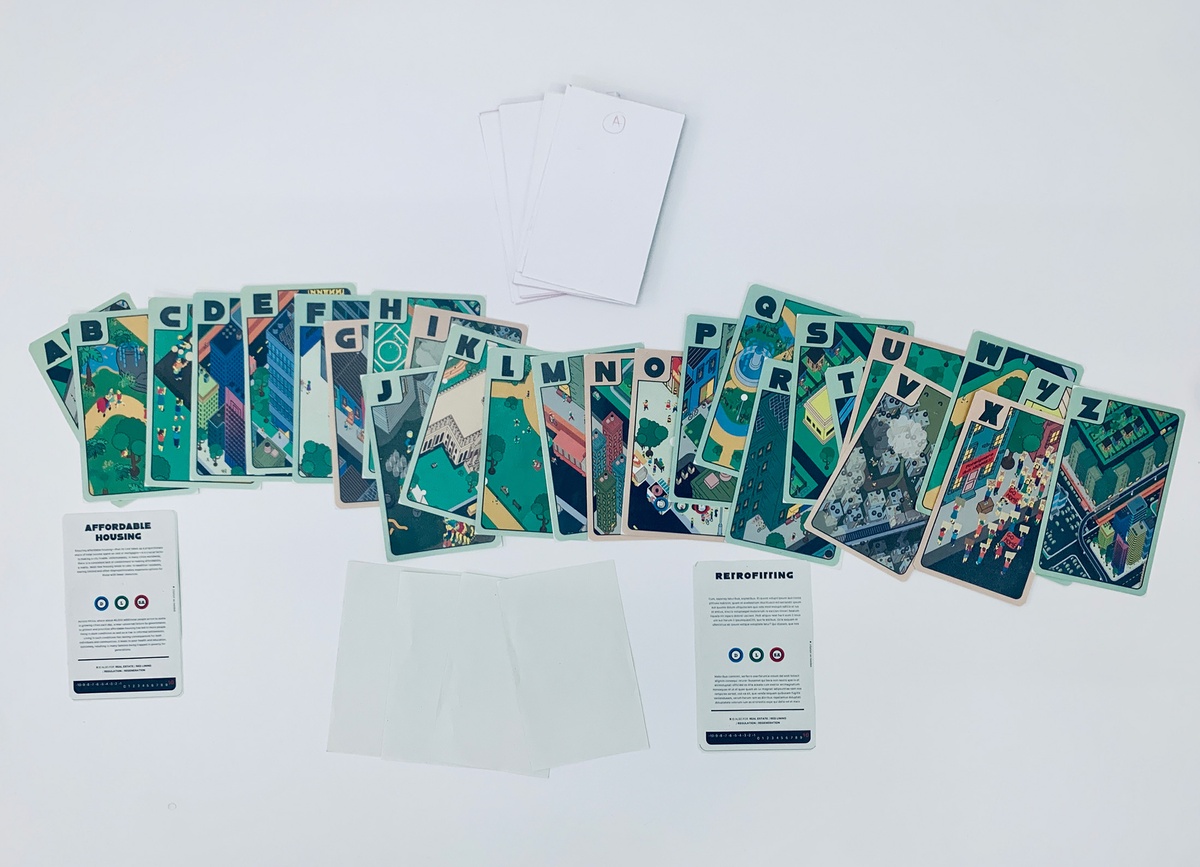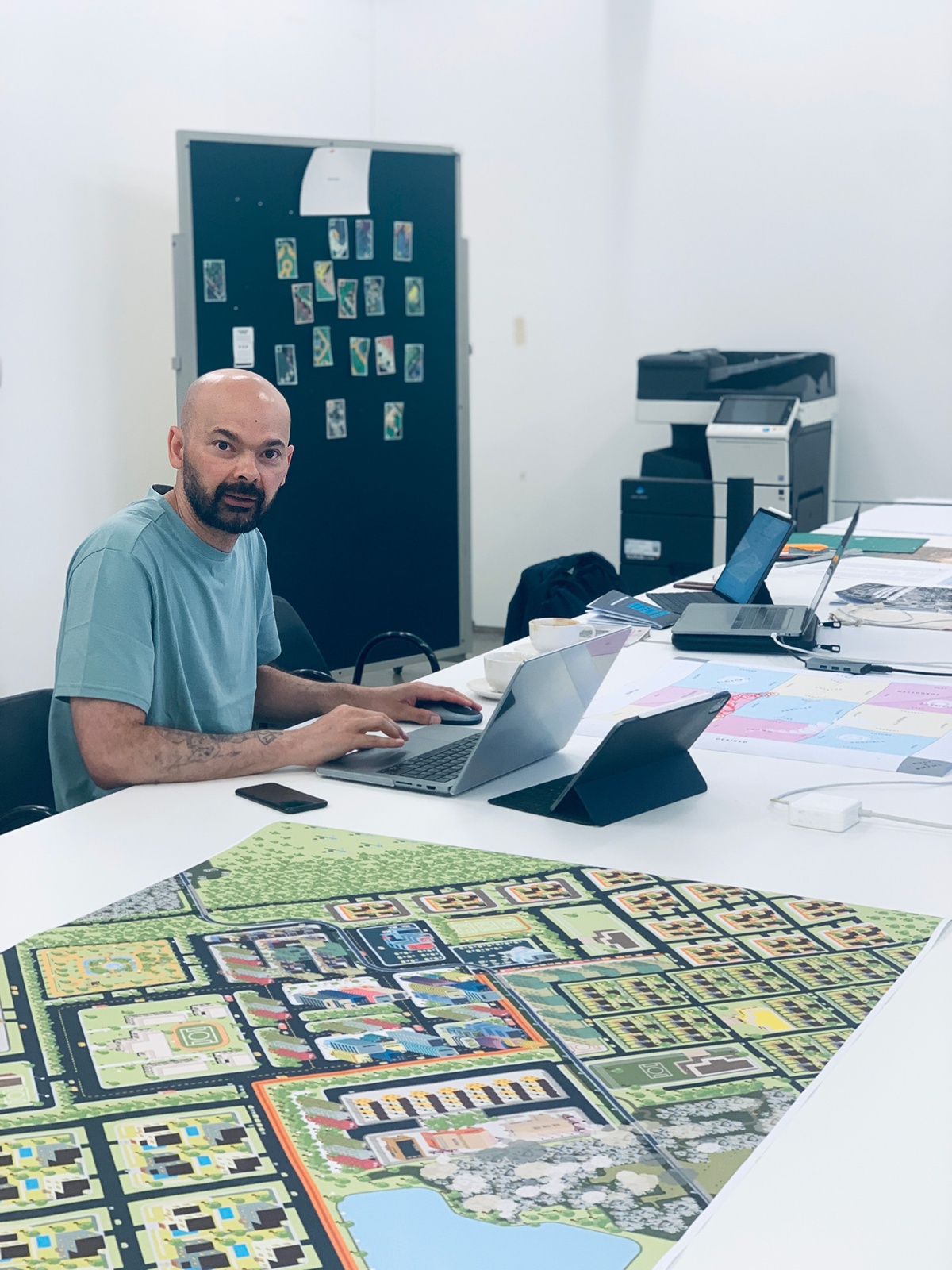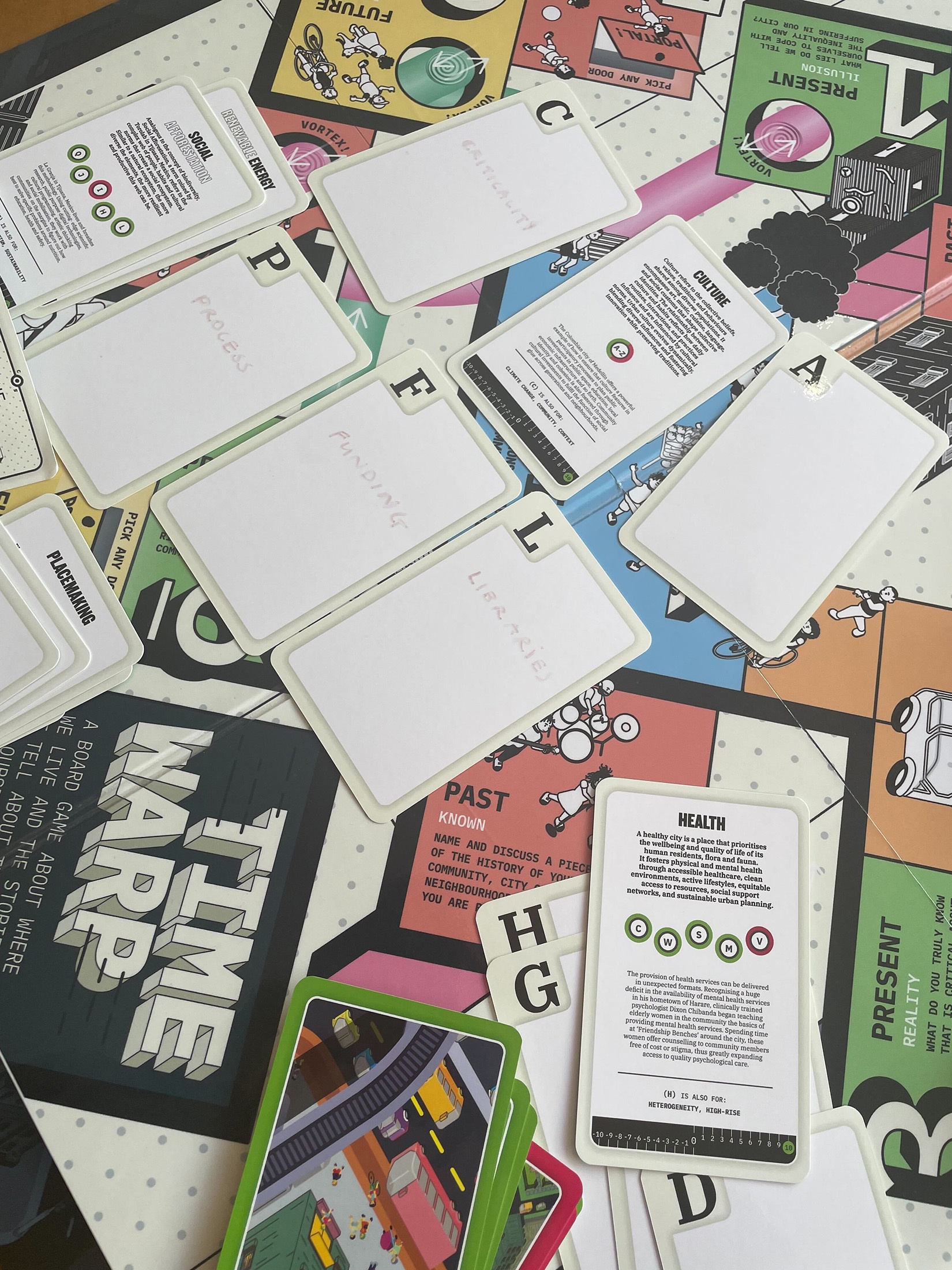
Players:
Cityscapes:
Laura Malan
Tau Tavengwa
Blain van Rooyen
A4:
Alana Blignaut
Lemeeze Davids
Sara de Beer
Josh Ginsburg
The Shift Game Set is a board game currently in development by Cityscapes urban research team, curated by Tau Tavengwa and Edgar Pieterse. “Not one of the significant urban and other societal challenges facing humanity today can be answered within the confines of one discipline, or solely based on ideas from one part of the world,” Cityscapes wrote of the intentions behind their prodigious magazine, first published in 2011 with title Rethinking Urban Things. Recently (in October 2024) an eleventh edition launched as a large-format ‘newspaper’ sized artefact of 168 pages collecting essays, journalism and research to offer an interdisciplinary approach to investigating critical urban studies.
Tavengwa and Pieterse invited A4’s team to become players of The Shift Game Set in its prototype phase. It includes the Time Warp game board and poster, two Urban Canvas Decks and an instructional booklet. Facilitating linear and non-linear play, the Time Warp game board allows players to compare observations across different contexts and timeframes. The Urban Canvas Main Deck provides coordinates for thinking about urban environments in relation to their social and cultural dimensions and urban planning policy, while its Blank counterpart affords the inclusion of individual perspectives.
Both Cityscapes and A4 are interested in taking the tools accrued in subject-specific research outside of their respective disciplines. What happens when a group of arts workers play a game made by urbanists? And when arts-based thinking is applied in different contexts? Thinking through gameplay and conversation, with insights from A4’s individual team members, we aided in the prototyping of its form. The research process leveraged structure to produce spontaneity. We unpacked its messages and prompts, and pointed out avenues for expansion. We offered artworks as artefacts that carry messages and meaning over time to be unlocked in the present. We used our digital infrastructure to map out the game’s multilayered content, and our website Path feature to create a digital play-through of the game.
Tau Tavengwa and Edgar Pieterse continue to pursue the Cityscapes methodology beyond the magazine, pioneering a mobile exhibition strategy for exploring the phenomena of urbanisation. In 2023, A4 hosted Tau Tavengwa and Edgar Pieterse in our Reading Room as they consolidated the contents and design of this toolbox. (The Shift Game Set emerged as one of its principal components.) Pieterse is the founding director of the African Centre for Cities, and A4 are long-term admirers of his work. The foundation’s yet unrenovated building hosted an Integration Syndicate in 2017 convened by the ACC in what was then the shell of our future curatorial studio. Since then, the foundation has been fortunate to accommodate associated practitioners in urbanity in the Global South for various workshops and symposiums. We continue to look for opportunities to intersect with Pieterse and Tavengwa’s research and support their processes in the hope that our curatorial studio may offer a place for thinking about public culture and place-making, alternative futures, and sustainable world-building.
